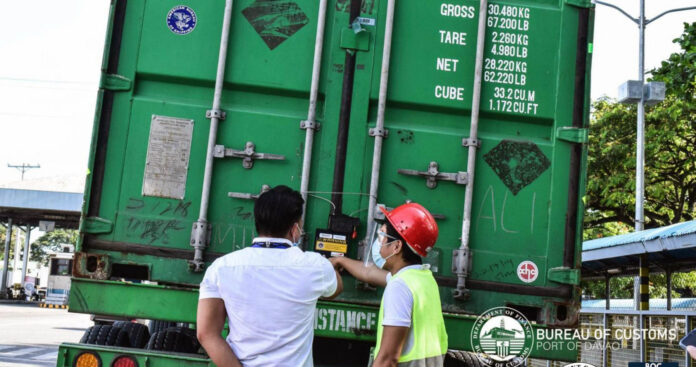
-
Since nationwide rollout of Electronic Tracking of Containerized Cargoes (E-TRACC) system in June 2020, 699 corridor alerts (deviation from registered routes), 32 security alerts, 18 unauthorized departures, and 84 unauthorized end trips have been recorded
-
E-TRACC remotely tracks inland movement of containerized cargoes bound for or in transit to container yard/container freight stations, customs bonded warehouses, Freeport zones, and economic zones
-
E-TRACC prevents erroneous delivery of containers, preventing issues on missing containers or unauthorized diversion of the carriers and misdelivery
-
E-TRACC is currently being fully implemented at the Port of Manila, Manila International Container Port, Batangas, Subic, Cebu, Davao, and Cagayan De Oro
Numerous violations by cargo carriers have been recorded since the June 2020 rollout nationwide of the Electronic Tracking of Containerized Cargoes (E-TRACC) System, according to the Bureau of Customs (BOC).
The system is proving effective in “detecting and curbing illegal activities in customs bonded warehouses, freeport, and economic zones, containers for export, and in shipments of meat, fisheries, and agricultural products,” the bureau said in a statement.
To date, the E-TRACC system has recorded 699 corridor alerts (deviation from registered routes), 32 security alerts, 18 unauthorized departures, and 84 unauthorized end trips.
Corresponding penalties were charged against the violators, BOC said.
BOC said the E-TRACC system has allowed it to remotely track, monitor, and audit the inland movement of containerized cargoes bound for or in transit to container yard/container freight stations (CY/CFS), customs bonded warehouses (CBW), Freeport zones, and economic zones. The system has also allowed tracking of export shipments and those subject to further inspection, such as meat, aquatic and agricultural shipments.
“Consequently, it is an effective tool for preventing erroneous delivery of containers, thus preventing issues on missing containers or unauthorized diversion of the carriers and misdelivery,” BOC noted.
It added that through the E-TRACC system, the manual procedure and underguarding of containers in transit have been streamlined, thereby saving on personnel complement and reducing bureaucratic processes.
E-TRACC is a web-based system that tracks the inland movement of containerized cargoes during transit and transfer to other customs territories and facilities. It allows BOC to track, monitor, and audit the location and condition of cargoes, as well as obtain real-time alarms on diversion and tampering of cargoes.
Under Customs Memorandum Order (CMO) No. 04-2020, which implements the E-TRACC system, an electronic customs seal (ECS) is required during the transfer of cargo to a CY/CFS or other customs facilities and warehouses; transit of cargo bound for Free Zones, inland customs office, depots, or terminals; transit to CBWs; export of cargo from Free Zones, inland customs office, depots or terminals, and CBWs to port of loading; and transfer of shipments subject to further verification and/or monitoring.
All container vans covered by CMO 04-2020 should be affixed with an ECS before being cleared to depart from the starting point or point of discharge for the voyage to the end point or point of destination.
Except when warranted under CMO 04-2020, customs cargo clearance must be fully completed before any shipment can be sealed with an ECS.
Booking for an E-TRACC trip can be made one day earlier or up to one hour before departure of the container.
E-TRACC requires payment of P500 within a 10-kilometer (km) radius from port of discharge and P700 beyond the 10-km radius from port of discharge. The charge covers both arming and disarming of the ECS.
At present, E-TRACC is being fully implemented at the Port of Manila, Manila International Container Port, Batangas, Subic, Cebu, Davao,




